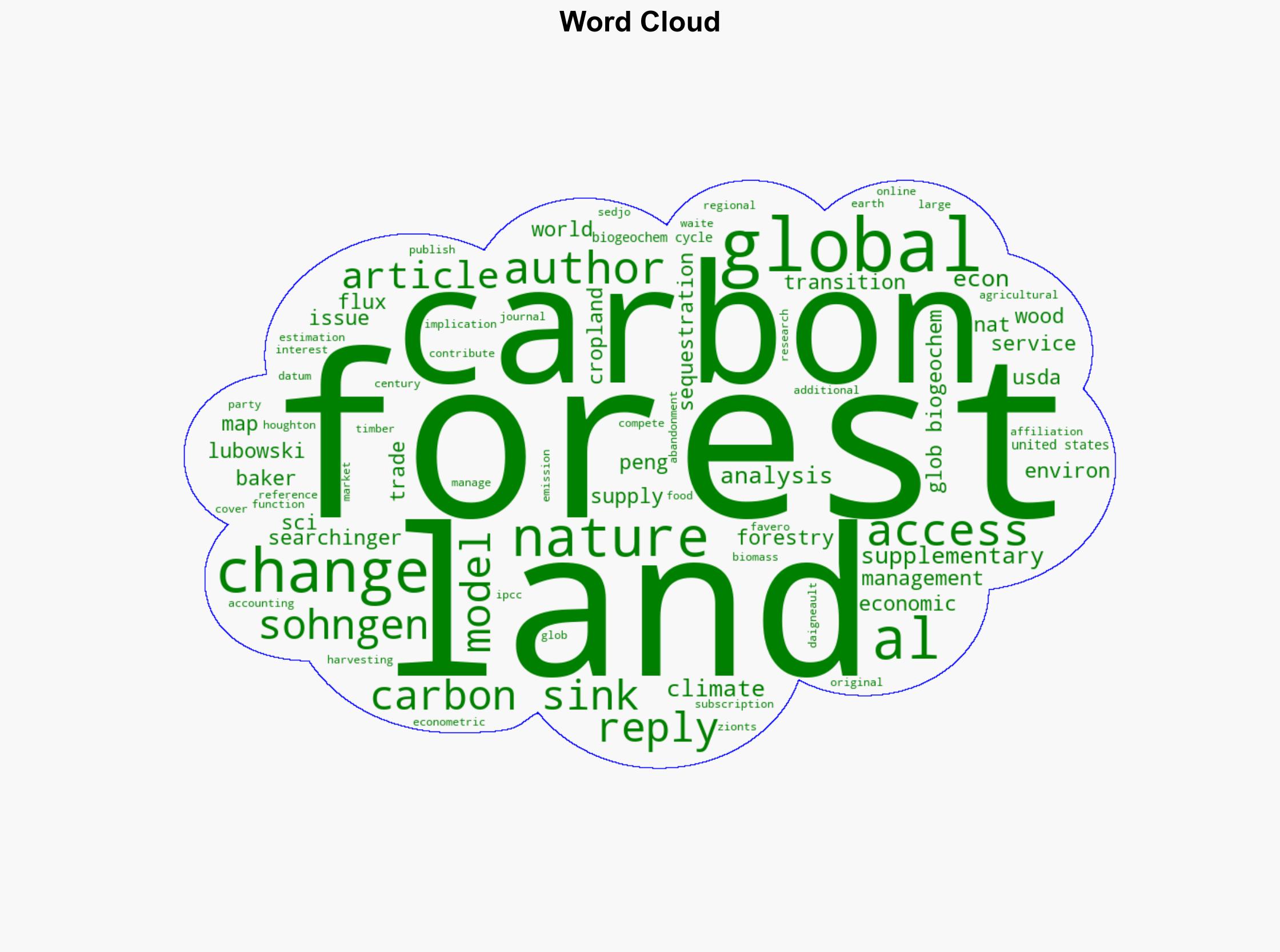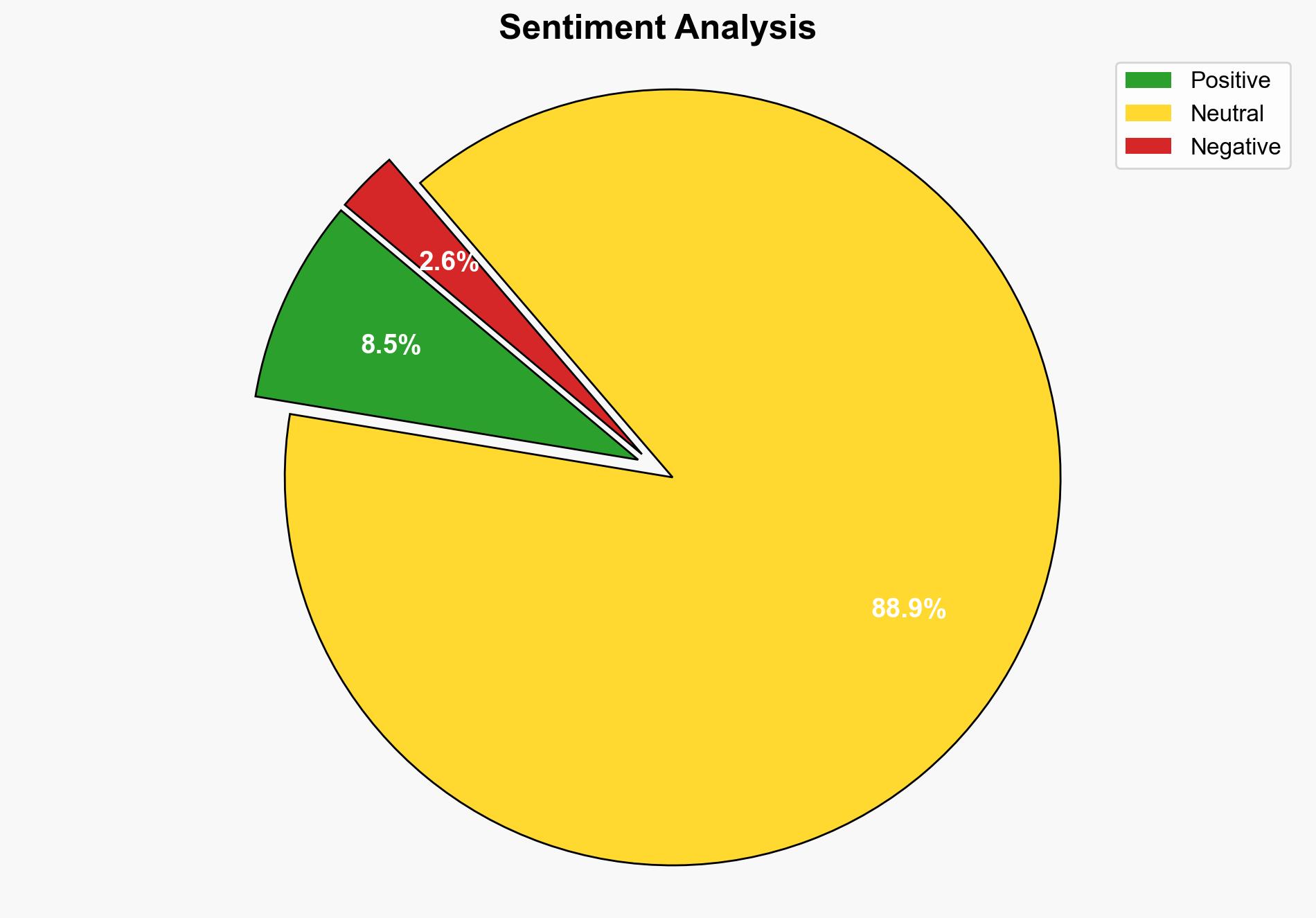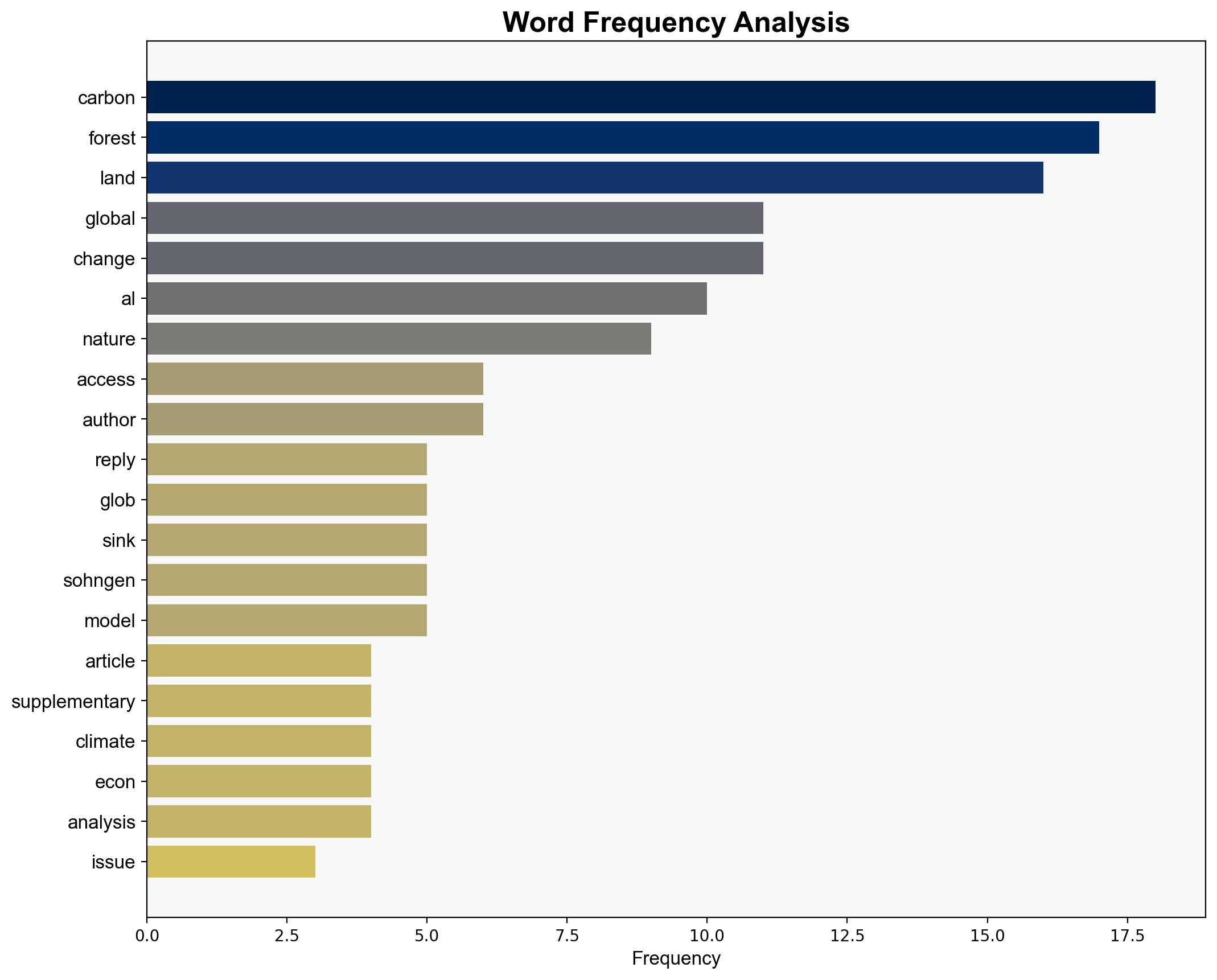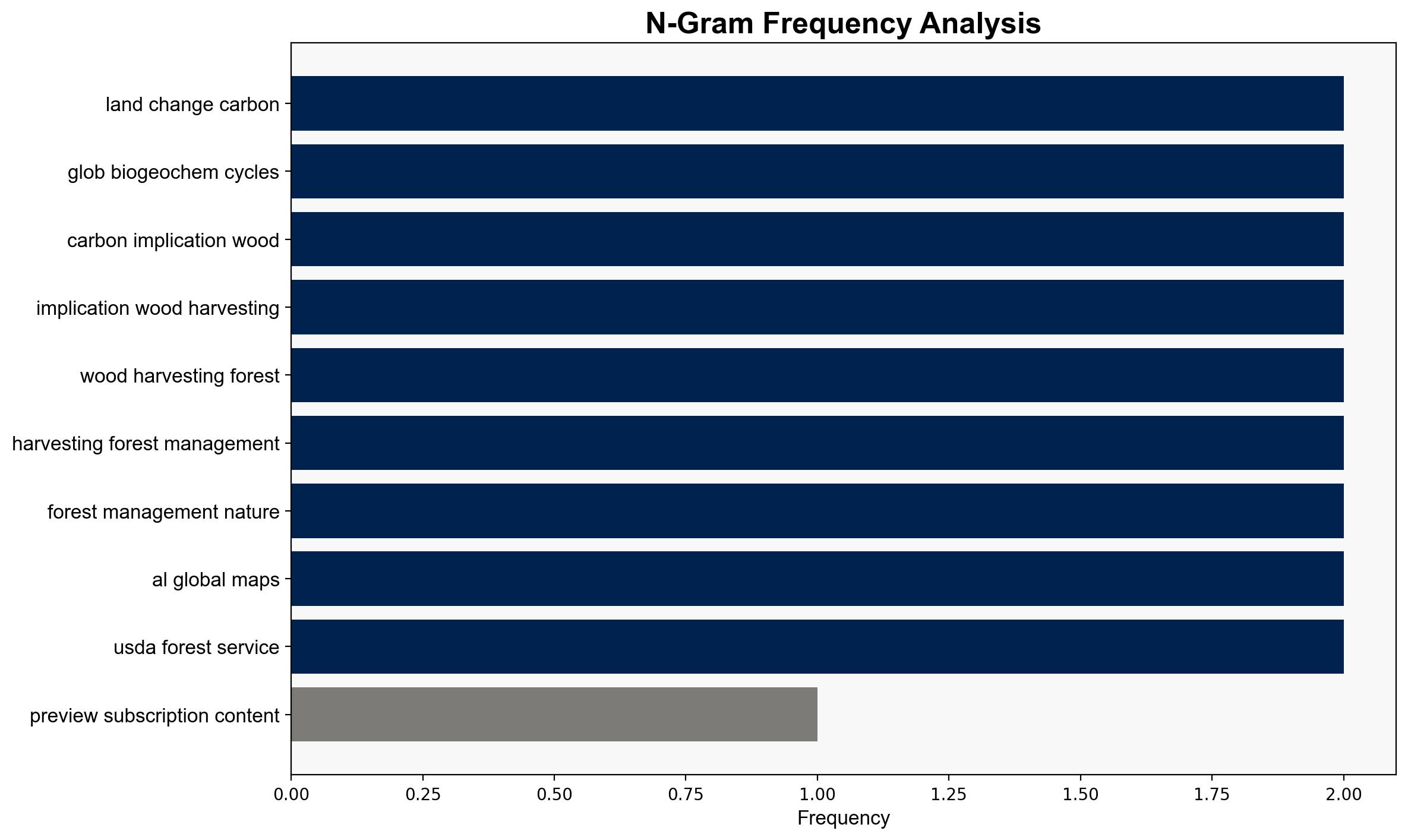Reply to Carbon implications of wood harvesting and forest management – Nature.com
Published on: 2025-10-29
Intelligence Report: Reply to Carbon implications of wood harvesting and forest management – Nature.com
1. BLUF (Bottom Line Up Front)
The strategic judgment indicates that the most supported hypothesis is that current forest management and wood harvesting practices significantly contribute to carbon emissions, outweighing their potential as carbon sinks. Confidence level: Moderate. Recommended action includes promoting sustainable forest management practices and enhancing carbon accounting methodologies to better capture the true carbon impact of forestry activities.
2. Competing Hypotheses
1. **Hypothesis A**: Current wood harvesting and forest management practices are net contributors to carbon emissions, primarily due to deforestation and inadequate reforestation efforts.
2. **Hypothesis B**: These practices are effectively managed to maintain or enhance the role of forests as carbon sinks, contributing positively to carbon sequestration.
Using the Analysis of Competing Hypotheses (ACH) 2.0, Hypothesis A is more supported by the evidence, particularly the references to global carbon fluxes and the impact of land-use changes on carbon emissions. Hypothesis B lacks substantial evidence in the provided text to counterbalance the emissions from deforestation and land-use changes.
3. Key Assumptions and Red Flags
– **Assumptions**:
– Hypothesis A assumes that current forestry practices are not sufficiently sustainable.
– Hypothesis B assumes effective implementation of sustainable practices and accurate carbon accounting.
– **Red Flags**:
– Potential bias in data interpretation favoring economic interests over environmental impacts.
– Inconsistent data on the effectiveness of carbon sequestration in managed forests.
– **Blind Spots**:
– Lack of comprehensive data on long-term impacts of forest management practices.
– Potential underestimation of technological advancements in sustainable forestry.
4. Implications and Strategic Risks
– **Economic Risks**: Unsustainable practices could lead to increased regulatory costs and loss of market access for non-compliant timber.
– **Geopolitical Risks**: International pressure and potential trade restrictions from countries prioritizing climate commitments.
– **Environmental Risks**: Accelerated climate change impacts due to increased carbon emissions from deforestation.
– **Cascading Threats**: Potential for increased natural disasters and biodiversity loss due to ecosystem degradation.
5. Recommendations and Outlook
- Promote policies that incentivize sustainable forest management and reforestation efforts.
- Enhance carbon accounting methodologies to accurately reflect the carbon impact of forestry activities.
- Scenario Projections:
- Best Case: Adoption of sustainable practices leads to a net increase in carbon sequestration.
- Worst Case: Continued unsustainable practices exacerbate carbon emissions and climate change impacts.
- Most Likely: Incremental improvements in practices with moderate impact on carbon emissions.
6. Key Individuals and Entities
– **Individuals**: Peng, Searchinger, Zionts, Waite
– **Entities**: IPCC, UNFCCC, Global Biogeochemical Cycles, Nature Portfolio
7. Thematic Tags
climate change, carbon emissions, sustainable forestry, environmental policy, global carbon budget





